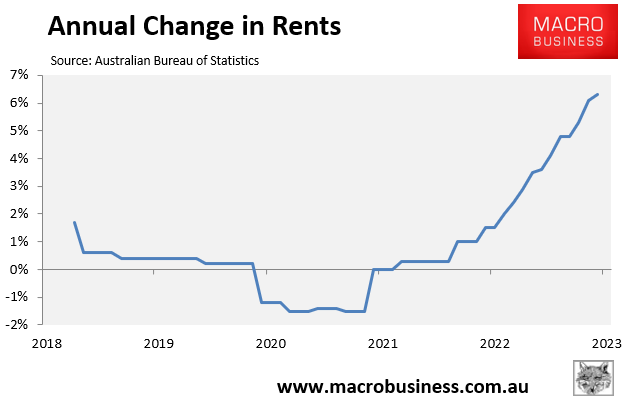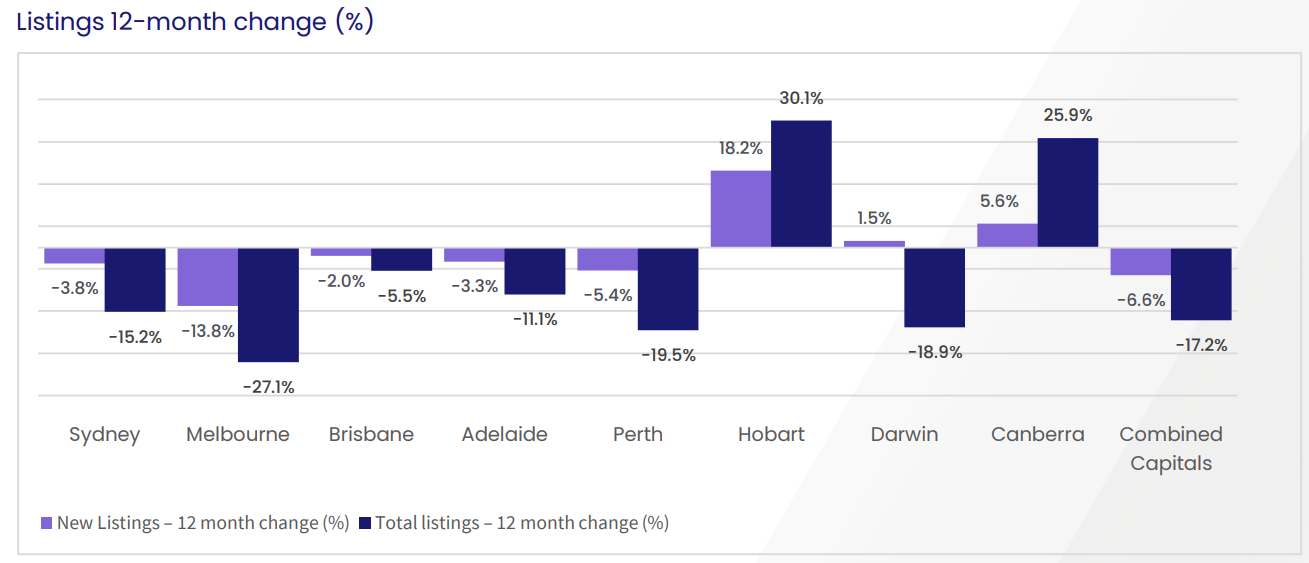Australia’s rental crisis continues to worsen.
Wednesday’s monthly inflation indicator, released by the Australian Bureau of Statistics (ABS), showed that rental growth rose to 6.3% in the year to May, “reflecting strong demand for rental properties and tight rental markets”:

A year earlier, annual rents were only rising by 1.5% across Australia’s capital cities.
In his testimony last month to the Senate Estimates Committee, RBA Governor Phil Lowe warned that residential rental growth is expected to hit a three decade high of 10%, which will continue to stoke inflation.
Lowe also predicted that rent inflation will remain high for a long time because Australia’s population is rapidly increasing and rental demand is easily outrunning supply.
“It’s really hurting some people. The underlying issue here is supply and demand in the rental market. The vacancy rates in many cities are very low”, Lowe told the Committee.
CoreLogic’s advertised rents index, which measures newly signed leases and is a leading indicator for the ABS’ CPI rents (which both measures new and existing leases), continues to grow rapidly, rising 11.7% in the year to May across the combined capital cities:

Source: CoreLogic
The key problem is that Australia’s population is growing at a record pace off record net overseas migration:

Meanwhile, there is an acute shortage of available rental properties, with listings tracking around half pre-pandemic levels:

Source: CoreLogic
In the year to May alone, capital city rental listings plunged by 17.2%, with each of the major capital cities recording falls:

Source: CoreLogic
Australians are trying to cope with the rental shortage by moving into group housing.
Sign-ups to the nation’s largest share house website, Flatmates.com.au, rose 70% year-on-year in May, breaking the record for the largest number of new users at 70,000.
“There has been a significant increase in demand for share accommodation across Australia over the past six months”, Flatmates.com.au community manager Claudia Conley said.
“Traffic started to increase in October last year … and has not died down, even after our usual ‘peak season’ ended in February”.
Obviously, the situation facing renters can only worsen from here.
The latest federal budget projected that Australia’s population would grow by a record 2.18 million people in the five years to 2026-27, driven by record net overseas migration of 1.5 million people over the same period.
That is the equivalent to adding a Perth’s worth of people to Australia’s population, with an Adelaide’s worth of people coming via net overseas migration.
Meanwhile, actual dwelling construction is falling amid record numbers of builder insolvencies, high materials costs, and high interest rates:

Growing Australia’s population by between 400,000 and 500,000 people a year amid falling dwelling construction necessarily means that Australia’s housing crisis will worsen, resulting in higher rents and increasing homelessness.
The Albanese Government’s mass immigration policy is an inequality disaster.

